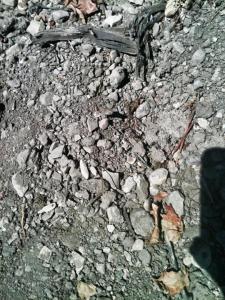Ancient Roots: An Introduction to Kitá
April 30, 2014
“We take each year as it comes. Recipes are boring. We look at what nature gives us and go from there.” Kitá’s winemaker Tara Gomez is a straight shooter. With some winemakers, you get the feeling they are thinking about their marketing strategy before they answer a question. With Gomez, there is none of this artifice or pretense; instead, there is a delicate and thoughtful honesty. This past week I tasted through numerous 2012 and 2013 barrels with Gomez and assistant winemaker Tymari LoRe, and discussed their approach in the vineyard and the cellar.
The young Kitá label was created by the Santa Ynez Band of Chumash Indians, debuting with the 2010 vintage. Gomez herself is Chumash, and seeks to carry on the stewardship of the land that her ancestors have been part of for centuries, now via their estate vineyard, Camp 4. Fess Parker originally planted this large, stunning 256 acre vineyard with 19(yes, 19!) different grape varieties in total. In 2010 the Santa Ynez Band of Chumash Indians purchased the land, and since taking over, they have fine-tuned the farming along with the team at Coastal Vineyard Care Associates (CVCA), working towards their goal of a more sustainable ecosystem and more expressive site character.
With the managing team of Rudy Bravo and Ben Merz, two of the stars of the renowned CVCA team, at the helm, they have addressed the needs of each block and variety in-depth, not an easy task for a vineyard with so much diversity. As part of their move toward sustainability they have installed owl and bat houses, moved away from using synthetic treatments in the vineyard (save for a couple of blocks that they’re still dialing in, and even then in miniscule amounts), and generally moved toward creating a more diverse environment. “Taking from the land only what we need and giving back to it is what we believe in,” proudly states Gomez. “We’re doing a pomace-to-compost program now, for example, which is a lot of work, but it’s important to us, so it’s worth it.”
While located in the extreme east of the Los Olivos District, Camp 4 still lies on the Positas series, part of the Ballard-Santa Ynez-Positas series that defines the AVA. Their close proximity to Happy Canyon is only hinted at by the chunks of serpentine present here that have come down from Figueroa Mountain. With the Rhone and Bordeaux varieties at Camp 4, there is an intense minerality present in the final wines that is distinct from Ballard Canyon to its west or Happy Canyon to its east. In the red varieties in particular there is a gravelly textural presence that unifies the wines.
In addition to their estate program for Kitá, Camp 4 sells fruit to around 60 different producers in the valley, many of whom vineyard designate the fruit or use it as the backbone for appellation bottlings. Grenache Blanc has jumped out as a star as it has in many vineyards within the Los Olivos District. Cabernet Sauvignon and Sauvignon Blanc also find a voice in this site that is strikingly different from the very-close-by Happy Canyon. “Cabernet Sauvignon is my baby,” states Gomez, and it shows in the details of the finished wine. While Happy Canyon Cab has a tendency to be brawny and ultra-ripe, reminiscent of modern Napa Valley’s powerful renditions of the grape, Kitá’s take on Cab is finessed, with notes of pencil lead and cassis that are more reminiscent of France’s Medoc. The sun-kissed character of California is still apparent, but with a great sense of balance and encouragement of non-fruit aromatics.
A graduate of CSU Fresno’s renowned viticulture & enology program, Gomez carefully blends science and intuition in her winemaking approach. “I look at everything when I’m picking,” she says. “I like to pick for acidity, because I like that brightness, but we look at brix and pH, we look at flavors, and we often do several picks to find the various components that we want to achieve.” This meticulous approach is present in the final wines. Tasting through barrels with the winemaking team here was fascinating, as they were constantly questioning what they could do to improve a wine the following vintage, or how they could blend barrels to make a more complete wine. “We try to be as true to the varietal as we can and deal with what we’re given. Of course, we strive for lower alcohol, we like that brightness, that acidity. We want age-ability. And I don’t believe in doing a bunch of additions to correct a wine.”
While a young label, Kitá is already making beautiful wines, and has a bright future ahead of it. They are taking a special site to even greater heights through devoted farming, and they are striving at every step to make wines that will age and showcase place. Tara Gomez is part of a great Santa Ynez Valley tradition of channeling the land that goes well beyond grapes, and ultimately, it is this love of a spiritual home that makes the deepest impression.


